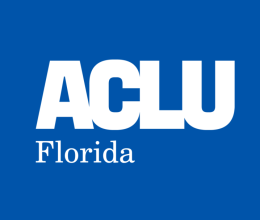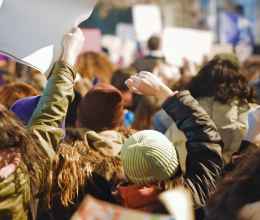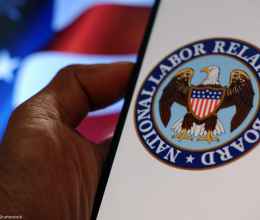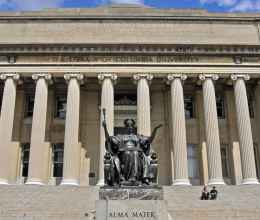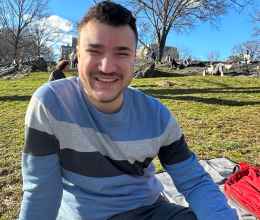
America’s youth is warring with a “law and order” president and demanding revolution. That setting describes the response to the 2018 shootings at a high school in Parkland, Florida. It also captures the scene at a university in Kent, Ohio, on May 4, 1970, nearly a half century earlier.
Back then, students were not protesting the two decade long “war on terror” in Afghanistan, nor President Donald Trump’s crackdown on “illegal immigration,” nor the killing of 17 at Marjory Stoneman Douglas High School that launched the March for Our Lives movement.
The protest at Kent State University was about the “war on communism” in Vietnam and President Richard Nixon’s crackdown on domestic dissent and civil rights. Students fighting injustice faced a fate of being murdered by American soldiers and law enforcement officers on American college campuses.
Four students were shot to death at the end of the spring semester at Kent State. Their murders by the Ohio National Guard came to symbolize the divide between young people, who were increasingly angered by the inaction of their parents in addressing the major issues of their time, and their elders, who refused to accept the inevitable: The world was changing, and the young people were the new adults in the room.
The civil rights movement for Black economic mobility and voting rights, amidst America’s dominating prosperity after World War II, set the stage for the youth campaign for change that came to define the 1960s and early 1970s.
Many white middle class baby boomers, particularly in the industrial North and the progressive West, attended integrated public schools with upwardly mobile Black people. Black people also gained increased access to white collar employment due to federal integration laws implemented during the second term of President Dwight Eisenhower.
Many of these students, Black or white, were the first in their families to attend college, like the kids at Kent State that fateful year.
Just days after the Kent State killings, two young Black men were killed amid protests at Jackson State College in Mississippi, an historically Black college. They were shot to death by members of the Jackson Police Department and the Mississippi Highway Patrol.
The protests of May 1970, which spread to some 1,300 campuses, erupted after President Nixon escalated the Vietnam War by invading Cambodia. The protests only grew angrier after the Ohio and Mississippi killings. The largest student strike in American history followed, with more than 500 colleges and universities suspending classes, shutting down.
A major issue for college-age youth was that the U.S. government could draft 18 to 20 year olds to fight in the Vietnam War but they could not vote. The Kent State shooting occurred just one year before the ratification of the 26th Amendment to the U.S. Constitution, which lowered the voting age from 21 to 18.
The student protests of the late 1960s and early 1970s were the first interethnic protest movements in modern America. They were directly influenced by the nonviolent civil rights movement prominently led by Martin Luther King Jr. The diversity in the student protest movement allowed for more open dialogue on conspicuous consumption and America's military-industrial complex, ideas that were previously considered taboo and too subversive for conversation in conservative Eisenhower America.
Conflicts in the youth movement of the early 1970s brought to the forefront of public consciousness the class schism between working class baby boomers who were drafted to fight in Vietnam, and privileged ones who could afford to avoid it by going to college.
Those protests also helped to galvanize new waves in the women's rights and gay rights movements in America in the decades that followed. These movements served as templates for the student organizing that took place generations later in the March for Our Lives movement.
The 58,000 killed in the Vietnam War between 1964 and 1975 far exceeds the hundreds of millennial and Generation Z youth and teachers killed at school massacres that have occurred since 1999: Columbine High in Colorado in 1999 (13 dead), Sandy Hook Elementary in Connecticut in 2012 (26 dead), and Stoneman Douglas High in 2018 (17 dead). But, the student movements and civil unrest that occurred in response to these events and unresponsiveness of the federal government during both eras galvanized young people to action in ways that have improved and continue to improve society.
The dissent relieved discontent for young people, who railed against elders and their acceptance of status quo politics at odds with changing social mores. These movements were revolutions that continue to inform the experiment that is American democracy, then, now, and into the future.
Today, despite similar histories of protest, millennials and baby boomers are at war over societal ideals. This is epitomized in the scornful millennial dismissal, "Okay Boomer!" The issue is the same that existed not only between the boomers and their parents -- the Silent Generation -- but between all generations: Change, and resistance, acceptance, and adaptation to it.
The student protests following the shootings at Kent State and Parkland were outcries for better tomorrows for the young people who would follow them, not for themselves. The revolutionary spirit of each successive generation informs the world and everyone in it. We should celebrate youth protest and rebellion, while offering guidance when asked for advice.
The spirit of the youth protest that peaked during Kent State and Watergate, and was marked by the Vietnam War and the resignation of Nixon, is as alive and evident as ever today. Today, the Trump presidency, with its xenophobic attacks on immigrants and non-white groups, and the resistance by people in power to implement comprehensive federal gun control legislation is fueling it anew.
Youth protest is the most fertile ground for cultivating America's ethos. This form of free speech is essential for the sustenance, maintenance, and evolution of American life.
The events at Kent State 50 years ago crystallized a generation’s fight for social change. The impact of that fight is proof that in rising up and taking a stand, we all can make the world better for everyone.

